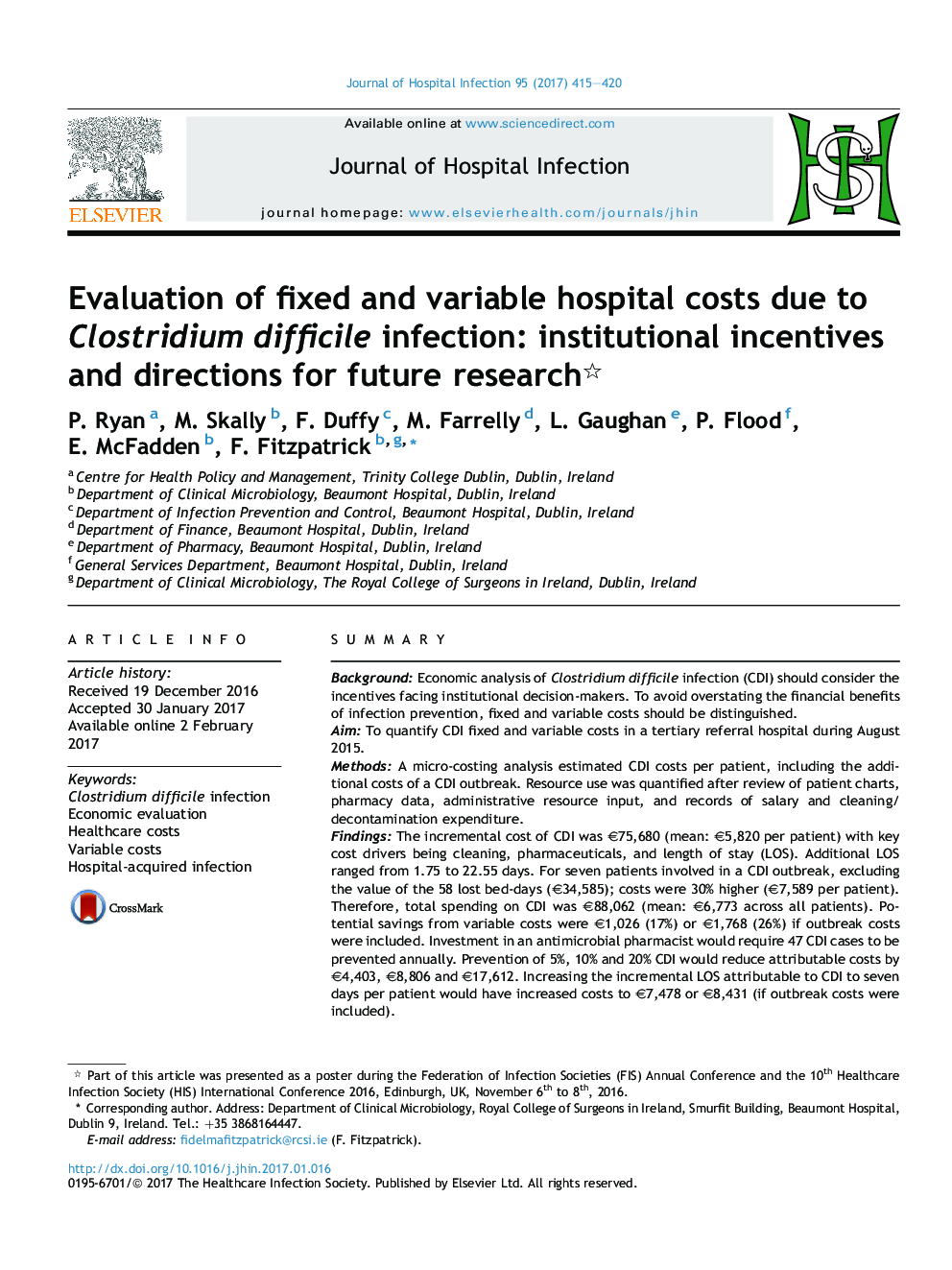| Article ID | Journal | Published Year | Pages | File Type |
|---|---|---|---|---|
| 5668323 | Journal of Hospital Infection | 2017 | 6 Pages |
SummaryBackgroundEconomic analysis of Clostridium difficile infection (CDI) should consider the incentives facing institutional decision-makers. To avoid overstating the financial benefits of infection prevention, fixed and variable costs should be distinguished.AimTo quantify CDI fixed and variable costs in a tertiary referral hospital during August 2015.MethodsA micro-costing analysis estimated CDI costs per patient, including the additional costs of a CDI outbreak. Resource use was quantified after review of patient charts, pharmacy data, administrative resource input, and records of salary and cleaning/decontamination expenditure.FindingsThe incremental cost of CDI was â¬75,680 (mean: â¬5,820 per patient) with key cost drivers being cleaning, pharmaceuticals, and length of stay (LOS). Additional LOS ranged from 1.75 to 22.55 days. For seven patients involved in a CDI outbreak, excluding the value of the 58 lost bed-days (â¬34,585); costs were 30% higher (â¬7,589 per patient). Therefore, total spending on CDI was â¬88,062 (mean: â¬6,773 across all patients). Potential savings from variable costs were â¬1,026 (17%) or â¬1,768 (26%) if outbreak costs were included. Investment in an antimicrobial pharmacist would require 47 CDI cases to be prevented annually. Prevention of 5%, 10% and 20% CDI would reduce attributable costs by â¬4,403, â¬8,806 and â¬17,612. Increasing the incremental LOS attributable to CDI to seven days per patient would have increased costs to â¬7,478 or â¬8,431 (if outbreak costs were included).ConclusionAs much CDI costs are fixed, potential savings from infection prevention are limited. Future analysis must consider more effectively this distinction and its impact on institutional decision-making.
